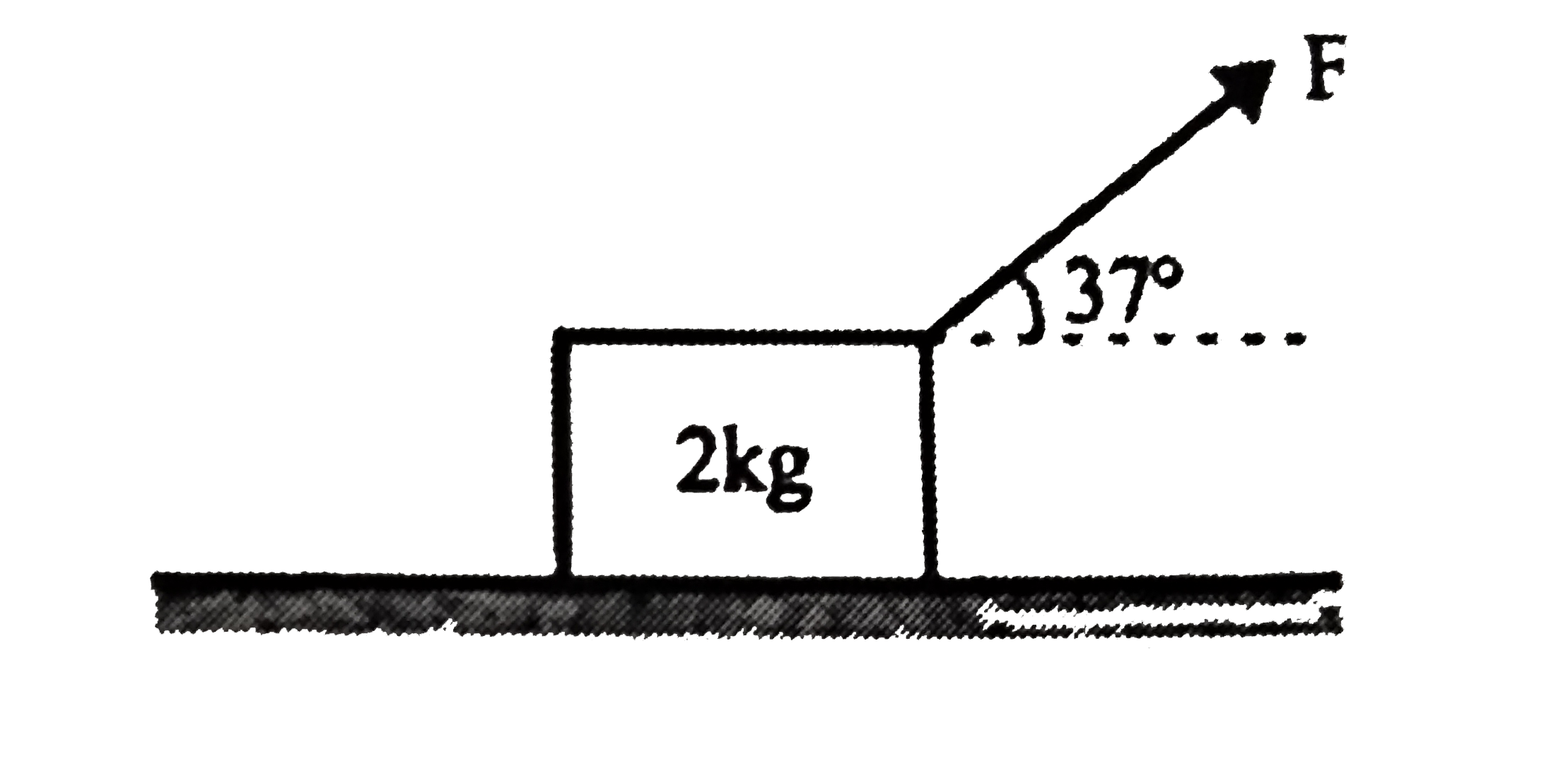A lift is moving down with an acceleration equal to the acceleration due to gravity. A body of mass M kept on the floor of the lift is pulled horizontally. If the coefficient of friction is μ then the frictional resistance offered by the body is:
μMg
Mg
Zero
μ Mg/2
The correct Answer is:C
To solve the problem, we need to analyze the forces acting on the body in the lift that is accelerating downwards with an acceleration equal to the acceleration due to gravity (g).
1. Identify the Forces Acting on the Body:
- The weight of the body (W) acting downwards is given by W=mg, where m is the mass of the body and g is the acceleration due to gravity.
- The normal force (N) acting upwards on the body from the floor of the lift.
2. Understand the Acceleration of the Lift:
- The lift is accelerating downwards with an acceleration a=g. This means that the effective acceleration acting on the body inside the lift is zero because the body is in free fall along with the lift.
3. Calculate the Normal Force (N):
- According to Newton's second law, the net force acting on the body in the vertical direction is given by:
Fnet=mg−N
- Since the lift is accelerating downwards at g, the net force is also equal to the mass times the acceleration of the body, which is zero in this case (as both the lift and the body are falling together):
Fnet=0
- Therefore, we can set up the equation:
mg−N=0
- Rearranging gives us:
N=mg
4. Determine the Normal Force in the Context of the Lift's Acceleration:
- However, because the lift is accelerating downwards at g, the effective normal force acting on the body becomes:
N=mg−mg=0
5. Calculate the Frictional Force:
- The frictional force (f) can be calculated using the formula:
f=μN
- Since we have found that N=0, substituting this into the equation gives:
f=μ⋅0=0
6. Conclusion:
- Therefore, the frictional resistance offered by the body is 0.
Final Answer:
The frictional resistance offered by the body is 0.
---
- The weight of the body (W) acting downwards is given by W=mg, where m is the mass of the body and g is the acceleration due to gravity.
- The normal force (N) acting upwards on the body from the floor of the lift.
- The lift is accelerating downwards with an acceleration a=g. This means that the effective acceleration acting on the body inside the lift is zero because the body is in free fall along with the lift.
- According to Newton's second law, the net force acting on the body in the vertical direction is given by:
Fnet=mg−N
- Since the lift is accelerating downwards at g, the net force is also equal to the mass times the acceleration of the body, which is zero in this case (as both the lift and the body are falling together):
Fnet=0
- Therefore, we can set up the equation:
mg−N=0
- Rearranging gives us:
N=mg
- However, because the lift is accelerating downwards at g, the effective normal force acting on the body becomes:
N=mg−mg=0
- The frictional force (f) can be calculated using the formula:
f=μN
- Since we have found that N=0, substituting this into the equation gives:
f=μ⋅0=0
- Therefore, the frictional resistance offered by the body is 0.
The frictional resistance offered by the body is 0.
Similar Questions
A lift is moving downwards with an acceleration equal to g. A block of mass m , kept on the floor of the lift of friction coefficient μ , is pulled horizontally . The friction acting on the block is
View SolutionA block of mass 2 kg is kept on a rough horizontal floor an pulled with a force F. If the coefficient of friction is 0.5. then the minimum force required to move the block is :-

View SolutionA block of mass m is kept on a horizontal table. If the static friction coefficient is μ., find the frictional force acting on the block.
View SolutionA block slides down an inclined plane that makes an angle θ with the horizontal. If the coefficient of kinetic friction is μ, find the acceleration of the block.
View SolutionA man in a lift feels an apparent weight W when the lift is moving up with a uniform acceleration of 1/3rd of the acceleration due to gravity. If the same man were in the same lift now moving down with a uniform acceleration that is 1/2 of the acceleration due to gravity, then his apparent weight is
View SolutionWhen a body slides down an inclined plane with coefficient of friction as μk, then its acceleration is given by .
View Solution(A):The body falls freely,when acceleration of body is equal to acceleration due to gravity.
(R ):A body falling freely will have constant velocity.'
View SolutionA block of mass 'm' is placed on the floor of a lift, moving upward with an uniform acceleration a = g. (μis the coefficient of friction between block and the floor of lift). If a horizontal force of umg acts on the block, then horizontal acceleration of the body is .......
View SolutionA body of mass m is placed on a rough surface with coefficient of friction μ inclined at θ. If the mass is in equilibrium , then
View SolutionA body of mass m is placed on a rough surface with coefficient of friction μ inclined at θ. If the mass is in equilibrium , then
View Solution
